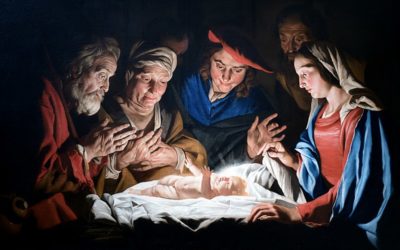One reason Joseph Smith went into the grove in 1820 was to ask the Lord which church to join. The Lord told Joseph to “join none of them” (Joseph Smith—History 1:19). In a March 1829 revelation, the Lord promised that “if the People of this Generation harden not their hearts I will work a reformation among them . . . & I will establish my Church yea even the church which was taught by my Disciples.” A short time later, the Lord repeated, “if this generation harden not their hearts, I will establish my church among them” (Doctrine and Covenants 10:53). In May 1829, when Hyrum Smith was eager to begin preaching the gospel, the Lord told him, “Wait a little longer, until you shall have . . . my church” (Doctrine and Covenants 11:16).
The next month, June 1829, as the Book of Mormon translation was wrapping up, the Lord told Oliver Cowdery that in the words he recorded as scribe “are all things written concerning the foundation of my church” (Doctrine and Covenants 18:4). He also told Oliver through Joseph that “if you shall build up my church, upon the foundation of my gospel and my rock, the gates of hell shall not prevail against you” (Doctrine and Covenants 18:5).
In response to this revelation, and relying heavily on the contents of the Book of Mormon, Oliver Cowdery prepared a document titled “Articles of the Church of Christ” to prepare for the organization of the Church.
An advertisement dated March 26, 1830, in the Wayne County Sentinel announced that the Book of Mormon was available to the public. Eleven days later on April 6, 1830, Joseph and Oliver organized the Church of Christ. This is the context for Doctrine and Covenants 20 and 21.
Doctrine and Covenants 20
Over the months preceding the organization of the Church, as Oliver had been preparing his “Articles of the Church of Christ,” Joseph may have been working on a similar document with a similar title. In any case, about the time the Church was organized, Joseph finalized the revelatory text that became known at the time as the “Articles and Covenants of the Church of Christ” but is known by most Church members today as section 20 of the Doctrine and Covenants.
Like Oliver Cowdery’s earlier document, this one drew heavily on the Book of Mormon. For example, the sacrament prayers found in verses 77 and 79 come from Moroni 4:3 and 5:2.
The “Articles and Covenants” can be considered the Church’s constitution or its first general handbook and is referenced by other sections of the Doctrine and Covenants. For example, section 33, verse 4, admonishes Church members to “remember the church articles and covenants to keep them.” Section 42, verse 12, tells priesthood holders to “observe the covenants and church articles to do them.”
Section 20 teaches us a lot about how revelation comes “line upon line” and “precept upon precept” (Isaiah 28:10; 2 Nephi 28:30; D&C 98:12). As the Church grew and Joseph received additional light and knowledge about how it should be organized, the Articles and Covenants were amended or revised to reflect that revelation. The Revelations and Translations Series of the Joseph Smith Papers and various online helps allow us to follow this line upon line revision, seeing revelation as it unfolds piece by piece.
(For further historical background, click here.)
Doctrine and Covenants 21
On April 6, 1830, the day the Church was organized, Joseph Smith dictated a revelation that is now known as section 21 of the Doctrine and Covenants. (For further historical background, click here.)
Significantly, this revelation begins, “Behold, there shall be a record kept among you” (verse 1). Why was this the first commandment given to the new Church? Because all of the key work of the Church—perfecting the Saints, proclaiming the gospel, redeeming the dead (many of the doctrines of which had not yet been revealed), and carrying for the poor and needy—would depend on good recordkeeping.
For example, Alma taught his son Helaman about the importance of keeping records, explaining that “were it not for these things that these records do contain, . . . Ammon and his brethren could not have convinced so many thousands of the Lamanites of the incorrect tradition of their fathers; yea, these records and their words brought them unto repentance” (Alma 37:9).
Moroni 6:4 explains that when people were baptized anciently, “their names were taken, that they might be remembered and nourished by the good word of God, to keep them in the right way.” In 1842, Joseph taught the Saints in a letter that “whatsoever you record on earth shall be recorded in heaven, and whatsoever you do not record on earth shall not be recorded in heaven” (Doctrine and Covenants 128:8).
Joseph did not come from a family that kept a lot of records. He did not like to write and found it difficult. So it’s not surprising that he did not write down the First Vision or Moroni’s appearances when they occurred. But from this point on, the Church had a commandment from the Lord to keep records, and Joseph struggled for the rest of his life to do so. (For details on Joseph Smith’s efforts at keeping a history, click here.)
Actually, the Lord commands all of us in the Book of Mormon to record our spiritual experiences: “For I command all men, both in the east and in the west, and in the north, and in the south, and in the islands of the sea, that they shall write the words which I speak unto them; for out of the books which shall be written I will judge the world, every man according to their works, according to that which is written” (2 Nephi 29:11). By recording our experiences, we can remember them and rely on them in time of need.
Doctrine and Covenants 22
If section 20 is the Church’s first general handbook, then section 22 is an addition to it. Many Christian denominations recognize each other’s baptism as valid. Thus, if you want to move from one denomination to another, you generally don’t need to be rebaptized in the new denomination if you were baptized in the previous one. Some people who wished to join the new Church of Christ organized by Joseph and Oliver wanted to do so without being rebaptized.
Section 22 explains the need for baptism by proper authority, which of course was the authority Joseph and Oliver received from John the Baptist as explained in section 13.
For further background on this section, click here.



